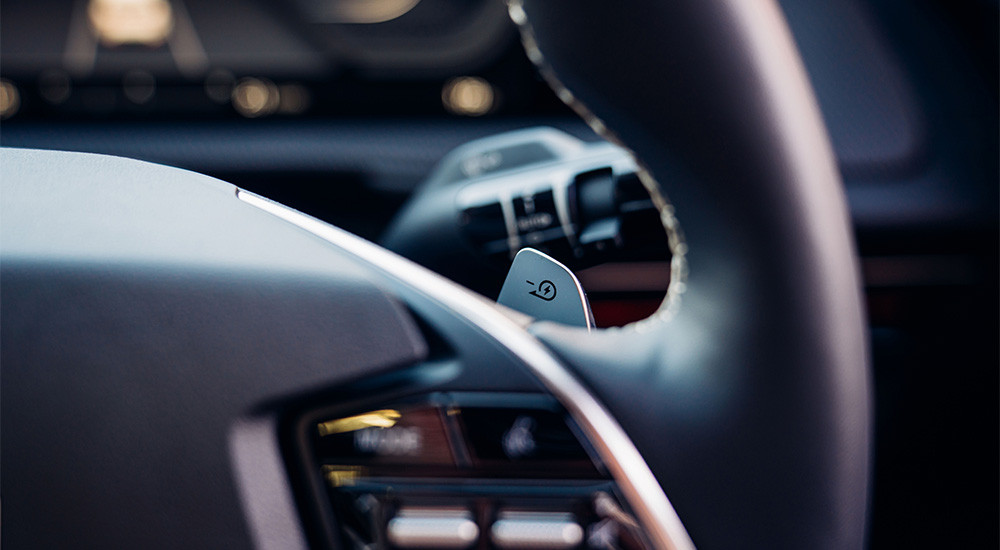Regenerative braking is a feature found on electric and hybrid cars that captures kinetic energy that would otherwise be wasted to charge a battery and improve efficiency.
If you’ve looked into electric or hybrid cars, chances are that you will have come across regenerative braking. Also known as brake energy recuperation, brake regen, or regen braking, the different terms mean the same thing.
An electric motor can drive a vehicle along, but it can also become a generator by inverting it. In a “normal” car, braking is applied either through the use of a brake pedal, with friction brakes slowing the vehicle down, or engine braking can reduce some speed by using the engine speed to reduce pace.
Brake regen works similarly to engine braking, but goes further. It can slow a vehicle down more efficiently, faster, and even bring a car to a complete halt in some cases.
How does regenerative braking work?

When using the brakes in a conventional car the driver pushes a pedal which then moves hydraulic fluid to push brake pads onto brake discs (or shoes onto drums). This slows the vehicle down, with energy converted to heat, and wearing away a little material from the pads and discs.
Electric and hybrid cars have friction brakes, but these are used to a lesser or greater degree depending on the situation. Most electric cars will primarily use brake energy recuperation to slow down. It’s more efficient, and adds a little range to the car’s battery.
It works because electric motors can work in two directions. Forward or reverse drives the wheels and moves the car, but it can also be inverted to add charge to the battery rather than draw from it. By using the motor to act as a generator, it will create resistance and slow the car down.
There are often various settings available to the driver so lessen or strengthen the ‘braking’, and some will bring the car to a complete halt using just the motor, others will get most of the way using the motor and then apply brakes at the end, and others will require greater use of the brakes to slow down.
For safety reasons, friction brakes are always available, and the car will modulate between regen and braking where it sees fit.
What recuperation settings are available?

Some electric cars only have one drive setting, relying on the use of the brake pedal to start brake energy recuperation, but the majority have at least two settings - D and B. B is stronger than that available from D, offering greater levels of regen and stronger braking.
Other EVs will have an auto setting, which will increase or decrease the regen strength depending on the situation, and others go one stage further, using radar to base the strength of brake energy recuperation depending on the distance to the car in front.
Some electric vehicles have a “one-pedal” setting, which allows the car to drive on “one-pedal”, relying on the brake energy recuperation as much as possible.
Finally, other models will provide a selection of settings, typically three or four options, for the driver to switch between, often using paddles on the steering wheel. This is the most flexible and efficient, but the least useful to “just get in and drive”.
At the opposite end of the scale, some manufacturers are fitting a setting that allows the driver to coast, rather than have any regen or braking at all. This is often more efficient at motorway speeds, where slowing down to charge the battery will only require the driver to use the throttle again. It’s regularly better, particularly when heading down hill at speed, to coast, and not use any energy.







